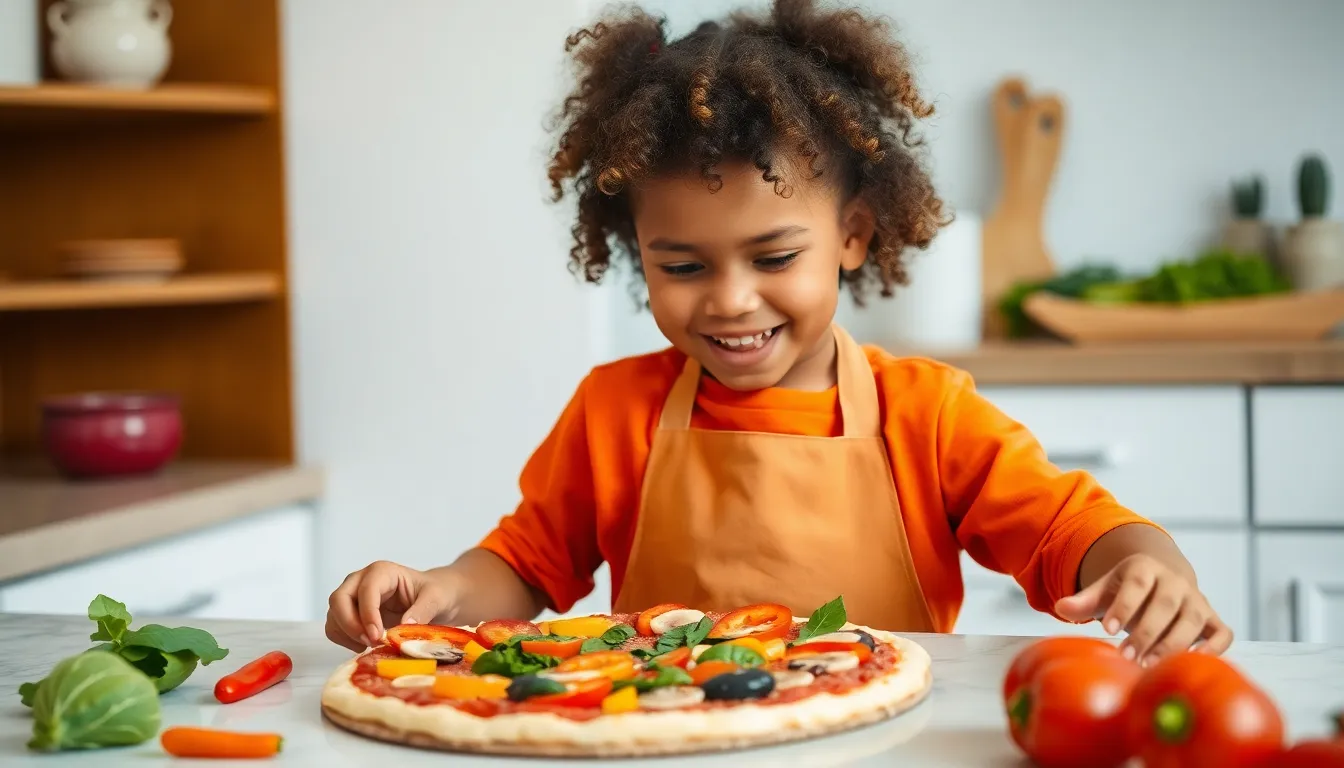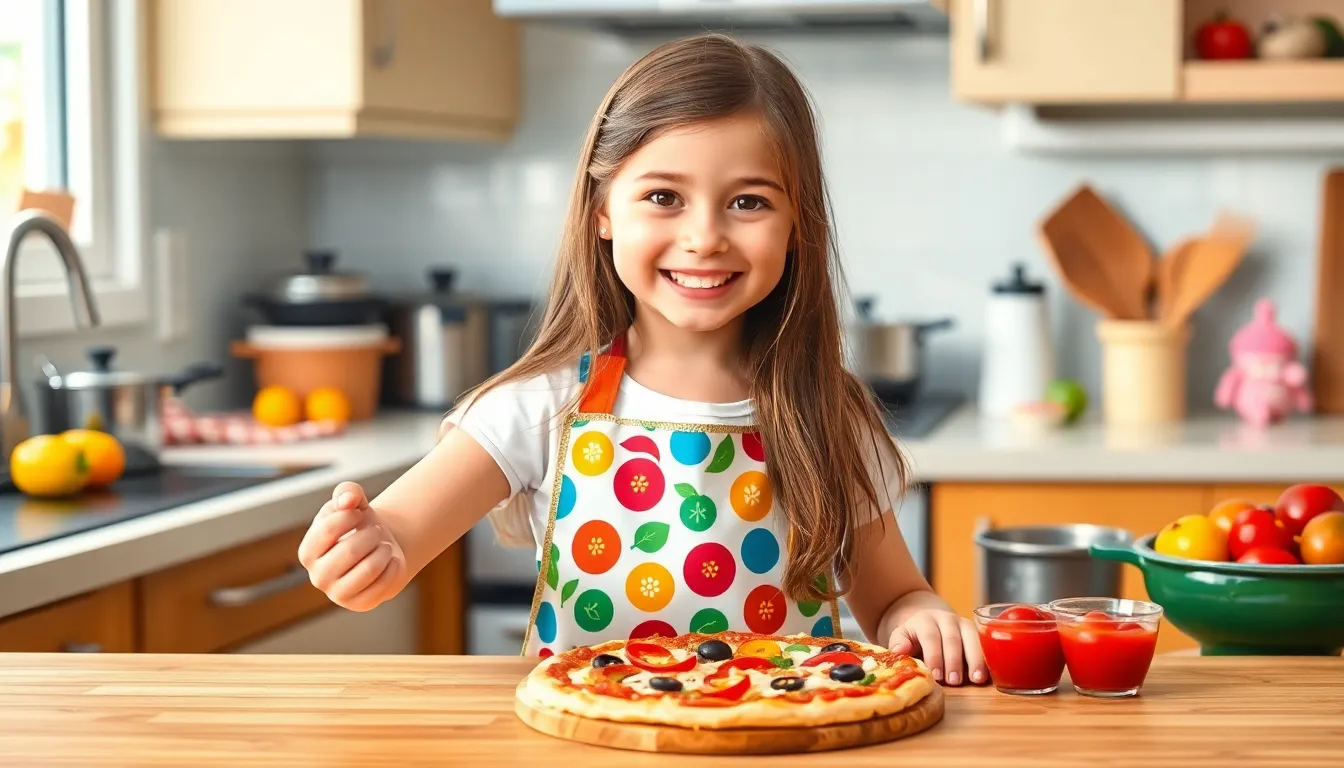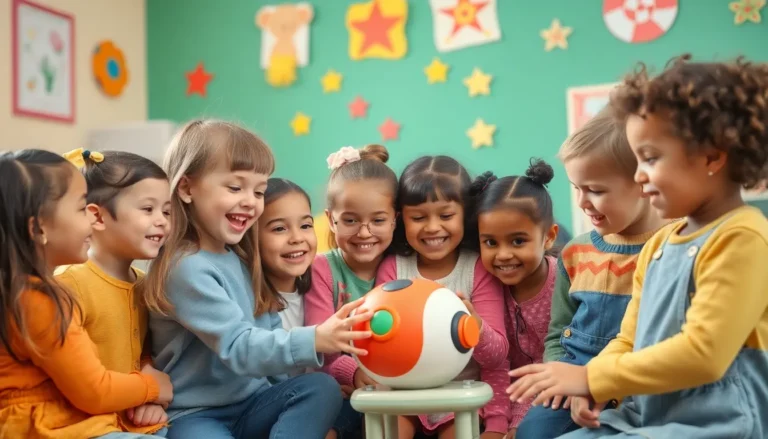Table of Contents
ToggleWhen it comes to dinner time, getting kids involved can feel like a culinary game of hide and seek. But what if they could whip up their own meals? Picture this: mini chefs in the kitchen, wielding spatulas like swords and mixing ingredients with the flair of a master chef. Not only does cooking boost their confidence, but it also sneaks in some valuable life skills.
Fun Dinner Ideas for Kids to Make
Taco night offers an enjoyable cooking experience. Kids can fill soft or hard taco shells with proteins, cheese, and vegetables. Choose from options like ground beef, shredded chicken, or black beans. Providing toppings like lettuce, tomatoes, and salsa invites creativity.
Mini pizzas captivate young chefs. Use English muffins or pre-made dough for the crust. Each child can spread sauce and sprinkle cheese. Options for toppings include pepperoni, bell peppers, or pineapple. Allowing children to choose their favorites makes the meal personal.
Pasta dishes provide versatility and fun. Kids can boil noodles, mix in sauce, and incorporate vegetables like broccoli or spinach. Adding pre-cooked meatballs boosts flavor. Encourage experimenting with herbs and spices for an adventurous twist.
Quesadillas make another easy choice. Kids can layer cheese and other fillings between tortillas, then cook on a skillet. Ingredients like beans, chicken, or vegetables work well. It’s a fun way for kids to practice flipping and cooking skills.
DIY sushi rolls impress aspiring chefs. Using sheets of nori, children can spread rice and add fillings like cucumber or cooked shrimp. Rolling can involve the whole family. Serve with soy sauce for dipping.
Omelets provide a quick, nutritious option. Kids can crack eggs and whisk them together in a bowl. Adding ingredients like cheese, spinach, or diced ham lets children customize their dishes. Cooking them in a skillet requires care and practice.
Each of these ideas not only teaches cooking skills but also encourages children to explore flavors. Family involvement in these meals creates a shared experience. Prioritizing fun, creativity, and learning makes dinner an enjoyable time for kids.
Healthy Options

Kids can engage in healthy cooking by making nutritious meals that emphasize fresh ingredients. These options promote healthy eating habits and offer a chance for creativity.
Veggie Pizzas
Veggie pizzas allow children to choose their favorite vegetables. They can pick from bell peppers, spinach, mushrooms, or zucchini to top their personal pizzas. Kids enjoy spreading tomato sauce on whole wheat tortillas or prepared pizza crust. After layering cheese on top, they can bake their creations until crispy. This fun activity encourages kids to explore flavors while enjoying a healthier alternative to traditional pizza.
DIY Tacos
DIY tacos are a tasty way for kids to build their own meals. A variety of fillings makes this option exciting and nutritious. Ground turkey, black beans, or grilled chicken can serve as protein sources. Parents can set out toppings like lettuce, tomatoes, cheese, and avocado for children to customize their tacos. Assembling these ingredients fosters independence in the kitchen and emphasizes the importance of healthy choices.
Quick and Easy Recipes
Preparing dinner can be a fun adventure for kids. Quick and simple recipes make it easy for them to join in and explore their culinary skills.
Quesadilla Creations
Kids can take charge with quesadilla creations. Start by providing flour or corn tortillas. Set out various fillings such as shredded cheese, cooked chicken, beans, or veggies. Encourage children to layer their ingredients, fold the tortillas, and then heat them in a pan. Cooking for about three minutes on each side ensures the cheese melts and the tortillas turn golden. Allowing kids to experiment with different combinations fosters creativity and helps them practice measuring ingredients.
Pasta Salad
Pasta salad offers a colorful and tasty option for young chefs. Use any short pasta shape, such as penne or rotini. After boiling the pasta, kids can mix in chopped vegetables like bell peppers, cherry tomatoes, and cucumbers. Adding olives or cheese chunks introduces exciting flavors. Encourage children to drizzle their favorite dressing over the mixture and toss it together. This dish allows for customization, teaching kids about taste balance while keeping meal prep enjoyable and engaging.
Involving Kids in Cooking
Involving kids in cooking creates a fun and educational atmosphere. It fosters teamwork and enhances their confidence in the kitchen.
Age-Appropriate Tasks
Assigning age-appropriate tasks ensures that children can participate meaningfully. Younger kids can wash vegetables, mix ingredients, or measure out portions. Older children can handle chopping and cooking with supervision. Assign them roles based on their maturity and skills. This approach builds responsibility and encourages independent thinking in the kitchen. For instance, a 5-year-old can pull together toppings for their mini pizzas while a 10-year-old can sauté vegetables or cook pasta. Engaging them in tasks suited to their abilities promotes safety and success.
Encouraging Creativity
Encouraging creativity allows kids to explore and express themselves through food. Allow them to pick toppings for homemade pizzas or create unique flavor combinations in pasta salads. Providing various ingredients sparks inspiration and imagination. Kids can mix and match flavors, leading to exciting culinary discoveries. Offer guidance but also give them the freedom to experiment. This process transforms meal preparation into an adventurous experience. Celebrate their creations by doing family taste tests, reinforcing the joy of cooking. Kids gain confidence and a sense of ownership as they share their imaginative dishes with family during dinner time.
Tips for Success
Prioritizing safety and planning elevates the cooking experience for kids. These tips ensure a fun and educational time in the kitchen.
Kitchen Safety
Ensuring a safe cooking environment is crucial. Children should understand the importance of washing hands before handling food. It’s essential to avoid handling sharp knives without supervision, so adults should assist with cutting tasks. Heat sources pose risks, so teaching kids to use oven mitts and keep away from hot surfaces is vital. Keeping the workspace organized helps prevent accidents and keeps distractions at bay. Establishing clear rules about using kitchen appliances fosters a sense of responsibility. Engaging them in discussions about safety increases awareness while they cook.
Meal Planning
Planning meals simplifies the cooking process. Involving kids in selecting recipes allows them to express their preferences and encourages excitement. Creating a shopping list together helps teach organization and decision-making. Choosing ingredients beforehand promotes healthy eating habits. Kids can learn about nutrition by discussing the benefits of various foods. Encouraging them to set a cooking schedule makes preparing dinner a fun family event. Assigning each child a specific task during cooking enhances teamwork and boosts confidence. This collaborative approach transforms meal planning into an engaging and educational experience.
Getting kids involved in cooking not only makes dinner a fun activity but also equips them with essential life skills. By exploring various meal options like tacos and mini pizzas, children can express their creativity while learning about nutrition and teamwork. These experiences foster independence and confidence in the kitchen, turning meal preparation into an enjoyable family bonding time.
Encouraging kids to experiment with flavors and ingredients helps them develop a positive relationship with food. With the right guidance and safety measures in place, dinner can become a delightful adventure that sparks a lifelong love for cooking. Embracing these ideas will not only nourish their bodies but also strengthen family connections around the dinner table.








